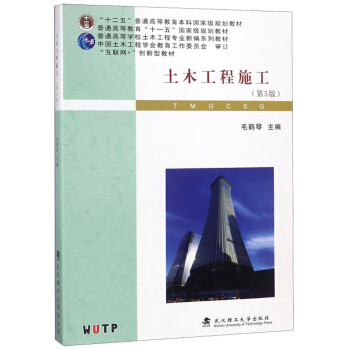土木工程材料科学与技术(英文版) / 高校双语教学系列教材
作者: [美]J.Francis Yong等
出版时间:2008年8月
出版社:中国建筑工业出版社
- 中国建筑工业出版社
- 9787112076338
- 1-1
- 172911
- 0047152170-8
- 平装
- 16开
- 2008年8月
- 273
- TU5
- 土木工程、建筑材料
- 本科
本书为《高等学校双语教学系列教材》之《土木工程材料科学与技术》分册,可供土木工程、建筑学、城市规划、工程管理等专业的双语教学使用,也可供相关专业师生、工作人员学习参考。
PREFACE
Part Ⅰ The Fundamentals of Materials
1 SURFACE PROPERTIES
1.1 Surface Energy and Surface Tension
1.2 Interfaces
1.3 Wetting
1.4 Adsorption
1.5 Capillary Effects
1.6 Adhesion
1.7 Colloids
1.7.1 Structure of Colloids
1.7.2 Stability of Colloids
1.8 The Double Layer 15
Part Ⅱ Behavior of Materials Under Stress
2 RESPONSE OF MATERIALS TO STRESS
2.1 Tension
2.1.1 Elastic Behavior
2.1.2 Inelastic Behavior
2.1.3 Definitions of Stress and Strain
2.1.4 Experimental Determination of Tensile Properties
2.2 Compression
2.3 Bending
2.3.1 Behavior in Pure Bending
2.3.2 Failure in Pure Bending
2.3.3 Types of Bending Tests
2.3.4 Limitations in Bending Tests
2.4 Direct Shear
2.5 Multiaxial Loading
2.5.1 Transverse Stresses
3 YIELDING AND FRACTURE
3.1 Failure Theories
3.1.1 Maximum Shear Stress Theory
3.1.2 Maximum Distortional Strain Energy Theory
3.1.3 Comparison of the Failure Theories
3.1.4 Mohr's Strength Theory
3.2 Fracture Mechanics
3.2.1 Griffith Theory
3.2.2 Stress Intensity Factor
3.2.3 Compressive Failure
3.2.4 Notch Sensitivity
3.2.5 Crack Velocity
3.3 The Ductile-Brittle Transition
3.4 Fracture Energy 55
3.5 Effect of Rate of Loading
3.5.1 Effect of Loading Rate on Brittle Materials
3.5.2 Static Fatigue
3.5.3 Effect of Loading Rate on Metals
4 RHEOLOGY OF LIQUIDS AND SOLIDS
4.1 Elastic and Viscous Behavior
4.2 Simple Rheological Models
4.3 Rheology of Fluids
4.4 Rheology of Viscoelastic Solids
4.4.1 Maxwell Model
4.4.2 Kelvin Model
4.4.3 Prandt Model
4.4.4 Complex Rheological Models
4.5 Creep of Engineering Materials
4.5.1 Creep in Metals
4.5.2 Creep in Polymers and Asphalts
4.5.3 Creep in Portland Cement Concrete and Wood
5 FATIGUE
5.1 Introduction
5.2 The Nature of Fatigue Failure
5.2.1 Crack Initiation
5.2.2 Crack Propagation
5.3 Types of Fatigue Loading
……
PartⅢ parieculate Composites:Portland Cement and Asphalt Conctretes
6 PARICULATE COMPOSITES
7 AGGREGATES
8 PORTLAND CEMENT CONCRETE
9 ASPHALT CEMENTS AND ASPHALT CONCRETES
PartⅣ Steel,Wood,Polymers,andComposites
10 STRUCTURAL STEELS
11 WOOD AND TIMBER
12 POLYMERS AND PLASTICS
SOLUTIONS TO NUMERICAL PROBLEMS












